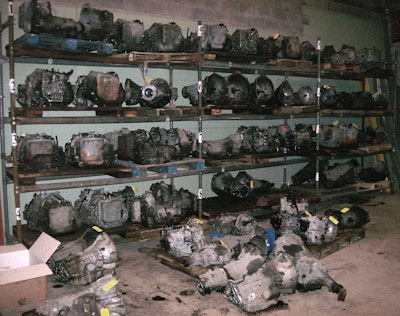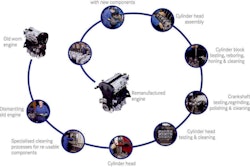
The industry does not exist without them.
Damron says the GPN’s Coman Centers rely on VIPAR Heavy Duty’s nationwide distributor base to source the majority of cores used in its remanufacturing operation. Damron says the group has produced literature to help instruct each member on how to better track cores as they move through their facilities, as well as inspection tips for analyzing returned cores.
The latter is important for two reasons.
Distributors who return unusable cores to a manufacturing facility force the remanufacturer to waste time inspecting cores of no value. They also negatively impact their own profitability by paying a core deposit to a customer who doesn’t deserve one; and are unable to recoup the losses when the remanufacturer deems the core ultimately worthless.
Fortunately, as the reman revolution continues, more and more aftermarket businesses are seeing the light, says Paul Reynolds, product consultant at Karmak.
“I think people are becoming increasingly more conscious of that fact,” he says. “I can remember years ago we’d go into a place and they’d say ‘We don’t track cores.’ They weren’t even attempting to capitalize on that.
“That’s changed over the years. [Aftermarket businesses] know now that if they do that well they can make a profit on that” in addition to the part sales.
Reynolds says Karmak has options in its business management software to help businesses manage core inventory, complete with notifications for when to expect core returns, how many to expect, and from whom.
“Core management is where all the magic happens,” says Bauer. “You can sell a lot of parts but if you don’t do that well you can get flipped from a total cost standpoint.”
Tuley says BorgWarner uses a grading scale, available to all distributors, to reimburse its distributors for cores. He says this transparency minimizes conflicts over core analysis and values.
“When the core criteria is followed customers don’t have any problems,” he says.
And when combined with a sales force willing to sell reman, all the pieces are in place for an aftermarket distributor to thrive.
The green wave may have reached the heavy-duty aftermarket later than other industries, but now that it is here suppliers don’t expect any slowdown.
So long as average vehicle age and new vehicle costs remain high, reman will continue to occupy a sweet spot in the aftermarket, Foxx says.
“I think customers may initially be willing to try [reman] because of the price point, but when they see how well these products perform and the value they offer … I think that’s only going to grow interest.”
Adds Reynolds, “[Reman] offers a good, quality product as a low-cost alternative. That’s a great option to sell.”











